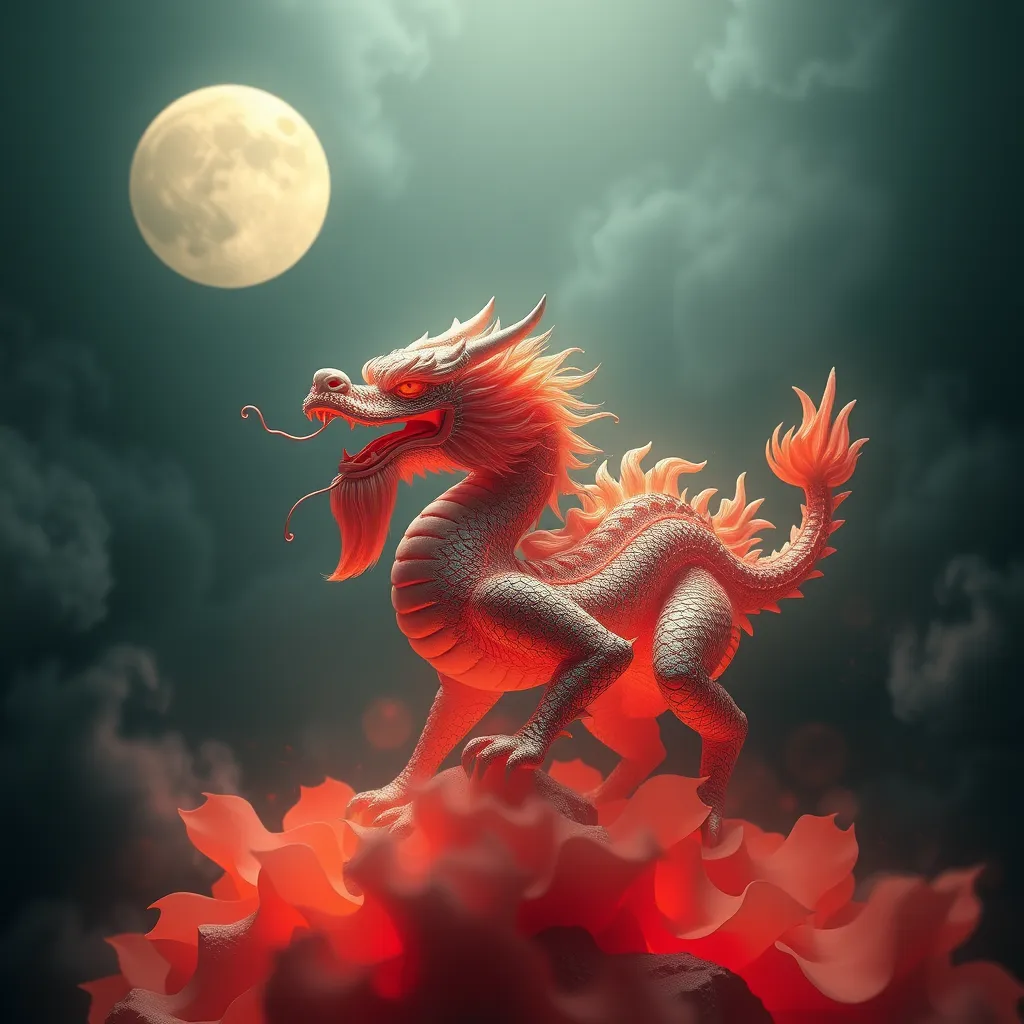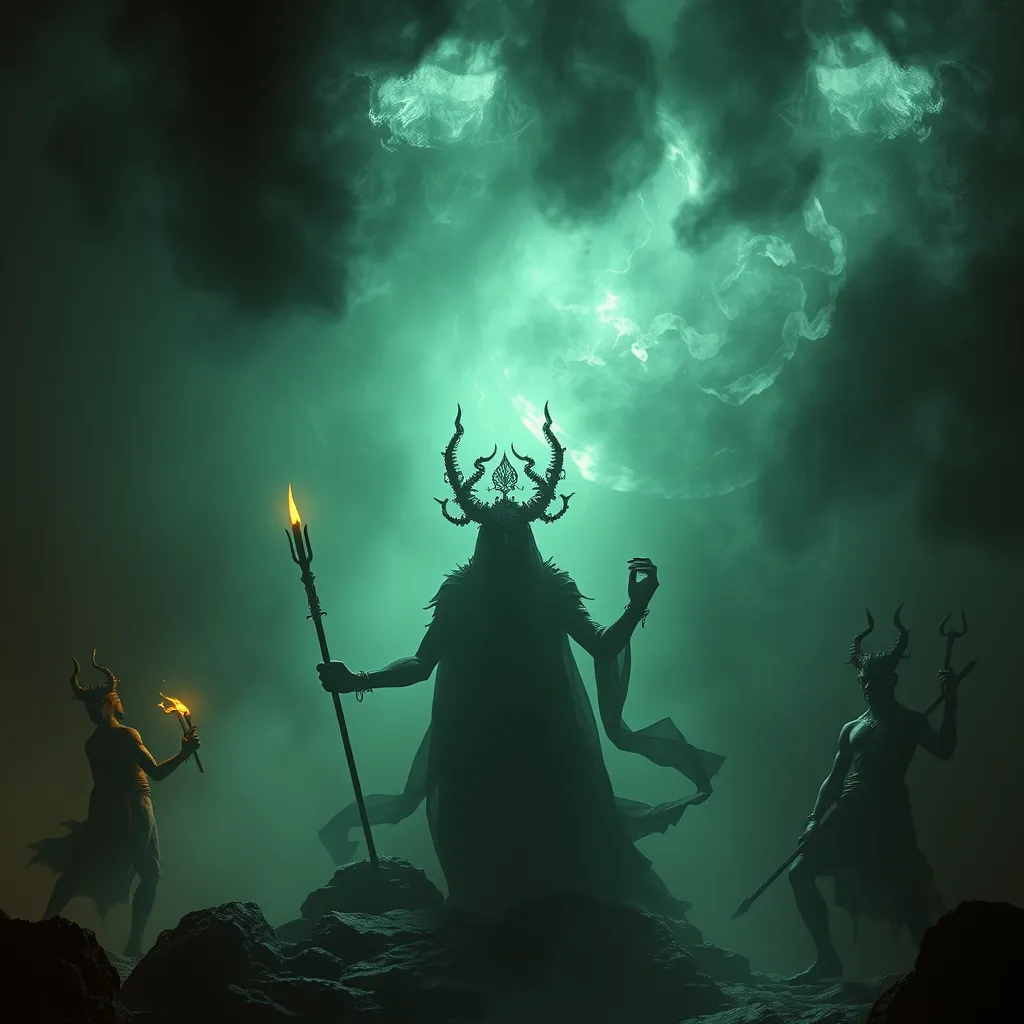The Undead of Norse Mythology: Examining the Mythological Origins of the Draugr
I. Introduction
The Draugr is a fascinating creature from Norse mythology, often depicted as a reanimated corpse that guards its grave and possesses supernatural powers. These undead beings have captured the imagination of many and hold a significant place in Norse lore.
Understanding the Draugr is essential for grasping the broader context of Norse mythology and its cultural implications. This article aims to explore the origins, characteristics, and significance of Draugr, as well as their role in literature and modern interpretations.
II. Historical Context of Norse Mythology
A. Overview of Norse mythology
Norse mythology is a rich tapestry of tales and beliefs that originates from the Scandinavian region. It encompasses a variety of gods, goddesses, and mythical beings, with a complex cosmology that includes realms like Asgard, Midgard, and Hel.
B. The cultural significance of the undead in ancient Norse society
The undead, particularly the Draugr, reflect the ancient Norse society’s views on life, death, and the afterlife. The fear of death and the unknown influenced many aspects of their culture, including burial practices and rituals.
C. Sources of Norse myths (Eddas, sagas, etc.)
The primary sources of Norse mythology are the Poetic Edda and the Prose Edda, along with various sagas. These texts document the beliefs, stories, and values of the Norse people, providing insight into their understanding of life and death.
III. Characteristics of the Draugr
A. Physical appearance and traits
The Draugr are often described as grotesque and decaying figures, with features that reflect their status as the undead. They may appear bloated, with darkened skin and a foul odor, embodying the decay associated with death.
B. Supernatural abilities
Draugr are not merely mindless zombies; they possess various supernatural abilities, including:
- Immense strength
- Shape-shifting
- Ability to rise from the grave
- Control over the undead
C. Behavioral patterns and motivations
The Draugr are often driven by a desire to protect their treasures or seek revenge against the living. They are known to haunt their burial sites, attacking anyone who disturbs their rest.
IV. The Origin of the Draugr
A. Mythological accounts of creation
The Draugr’s origin is steeped in myth, often linked to the death of a warrior or a person of significance. Stories tell of how these individuals, filled with greed or unfulfilled desires, become Draugr after death.
B. Connection to burial practices and beliefs about death
The Draugr’s existence is closely tied to Norse burial practices. The dead were often buried with their possessions, and the belief was that their spirits could return to reclaim what was theirs.
C. Influence of local folklore and traditions
The concept of the Draugr may have also been influenced by local folklore and traditions regarding the dead, which varied across regions but generally reflected a fear of the restless dead.
V. The Role of Draugr in Norse Literature
A. Key stories and sagas featuring Draugr
Numerous sagas feature Draugr, including:
- Grendel’s Mother: While not a Draugr in the strictest sense, she shares characteristics with these undead beings.
- Njáls saga: Features a Draugr named Gormr who plagues the living.
- Hrolf Kraki’s saga: Contains tales of Draugr as guardians of treasure.
B. Symbolism and themes associated with Draugr
Draugr often symbolize the consequences of greed, the fear of death, and the unresolved issues of the past. They serve as a reminder of the need for proper burial rites and respect for the dead.
C. Comparisons with other mythological creatures
While Draugr share similarities with other undead beings in global folklore, such as zombies and wraiths, they possess unique traits that reflect Norse beliefs. For instance, the Draugr’s connection to burial sites is a distinct aspect of their mythology.
VI. Modern Interpretations and Representations
A. Draugr in contemporary media (literature, film, video games)
In recent years, Draugr have made their way into popular culture, appearing in various forms of media:
- Literature: Novels exploring Norse mythology often feature Draugr as key antagonists.
- Film: Movies that delve into Norse legends depict Draugr in chilling and dramatic ways.
- Video games: Titles such as The Elder Scrolls V: Skyrim include Draugr as formidable enemies.
B. Influence on modern horror and fantasy genres
The Draugr’s portrayal in modern media has influenced the horror and fantasy genres, contributing to the archetype of the undead and shaping how audiences perceive these beings.
C. Cultural relevance and resurgence in popularity
As interest in Norse mythology grows, so does the popularity of the Draugr. This resurgence highlights a fascination with ancient beliefs and the cultural significance of these mythical beings.
VII. The Draugr and Concepts of Death and the Afterlife
A. Norse beliefs about life after death
The Norse had complex beliefs about the afterlife, with realms such as Valhalla and Hel representing different fates for the dead. The Draugr’s existence challenges these notions by embodying unresolved issues in life.
B. The significance of Draugr in understanding Norse views of mortality
By examining the Draugr, we gain insight into how the Norse viewed mortality, death, and the consequences of one’s actions in life. The Draugr serves as a cautionary tale about greed and the importance of proper burial rites.
C. The interplay between life, death, and the undead in Norse culture
The connection between life and death in Norse culture is embodied in the Draugr, representing the fine line that exists between the two realms. Their existence raises questions about what happens to the soul after death and the potential for unrest.
VIII. Conclusion
In summary, the Draugr holds a significant place in Norse mythology, representing the fears and beliefs surrounding death and the afterlife. Their characteristics and stories provide a window into the cultural values of the Norse people.
The enduring legacy of the Draugr is reflected in modern interpretations, showcasing their relevance in contemporary culture. For those interested in delving deeper into Norse mythology, exploring the Eddas and sagas is a valuable starting point.
Further reading on this subject can include works on Norse mythology, folklore studies, and analysis of the undead in various cultures, offering a broader perspective on these fascinating beings.




